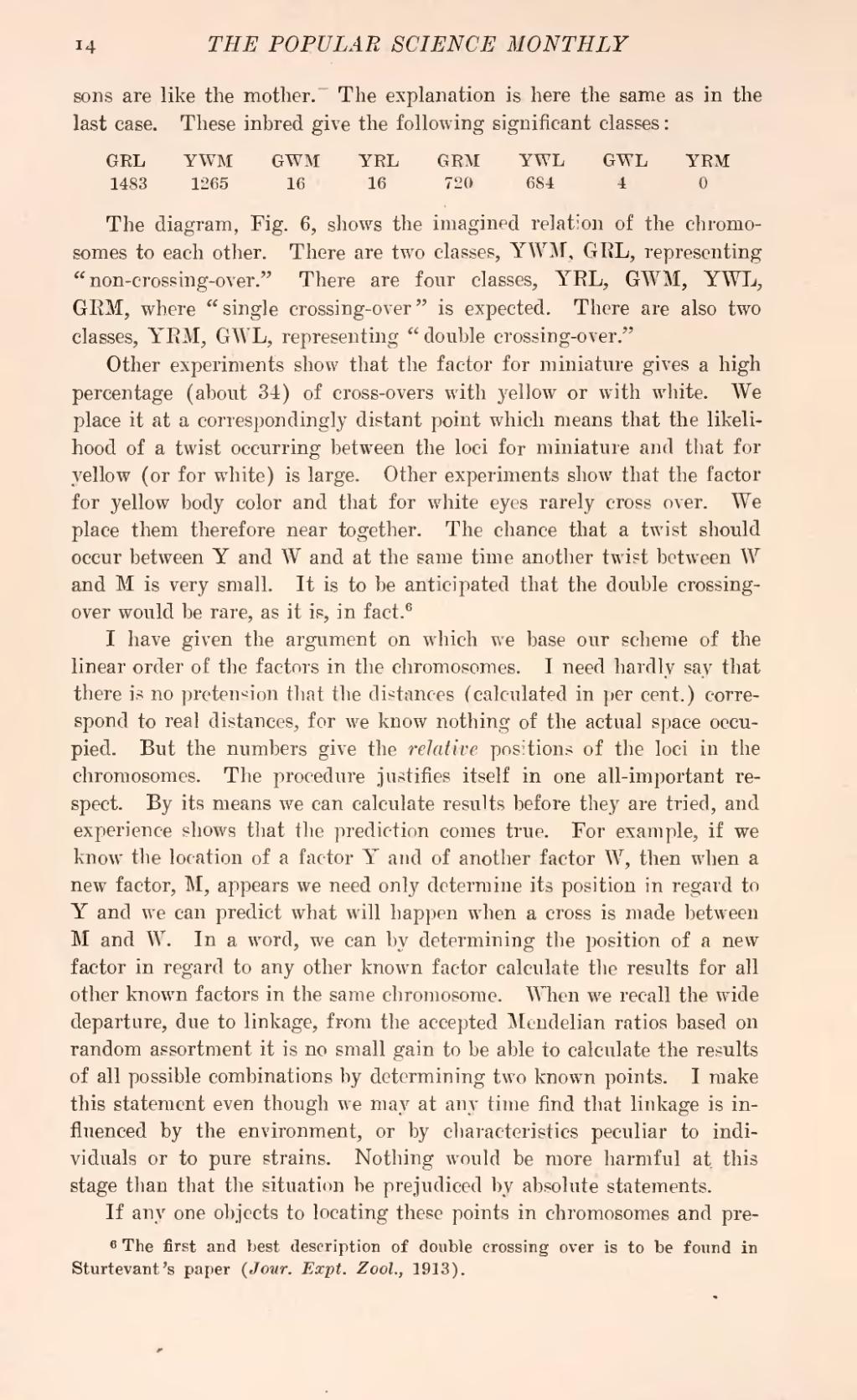sons are like the mother. The explanation is here the same as in the last case. These inbred give the following significant classes:
| GEL | YWM | GWM | YRL | GRM | YWL | GWL | YEM |
| 1483 | 1265 | 16 | 16 | 720 | 684 | 4 | 0 |
The diagram, Fig. 6, shows the imagined relation of the chromosomes to each other. There are two classes, YWM, GRL, representing "non-crossing-over." There are four classes, YRL, GWM, YWL, GRM, where "single crossing-over" is expected. There are also two classes, YRM, GWL, representing "double crossing-over."
Other experiments show that the factor for miniature gives a high percentage (about 34) of cross-overs with yellow or with white. We place it at a correspondingly distant point which means that the likelihood of a twist occurring between the loci for miniature and that for yellow (or for white) is large. Other experiments show that the factor for yellow body color and that for white eyes rarely cross over. We place them therefore near together. The chance that a twist should occur between Y and W and at the same time another twist between W and M is very small. It is to be anticipated that the double crossingover would be rare, as it is, in fact.[1]
I have given the argument on which we base our scheme of the linear order of the factors in the chromosomes. I need hardly say that there is no pretension that the distances (calculated in per cent.) correspond to real distances, for we know nothing of the actual space occupied. But the numbers give the relative positions of the loci in the chromosomes. The procedure justifies itself in one all-important respect. By its means we can calculate results before they are tried, and experience shows that the prediction comes true. For example, if we know the location of a factor Y and of another factor W, then when a new factor, M, appears we need only determine its position in regard to Y and we can predict what will happen when a cross is made between M and W. In a word, we can by determining the position of a new factor in regard to any other known factor calculate the results for all other known factors in the same chromosome. When we recall the wide departure, due to linkage, from the accepted Mendelian ratios based on random assortment it is no small gain to be able to calculate the results of all possible combinations by determining two known points. I make this statement even though we may at any time find that linkage is influenced by the environment, or by characteristics peculiar to individuals or to pure strains. Nothing would be more harmful at this stage than that the situation be prejudiced by absolute statements.
If any one objects to locating these points in chromosomes and pre-
- ↑ The first and best description of double crossing over is to be found in Sturtevant's paper (Jour. Expt. Zool., 1913).
